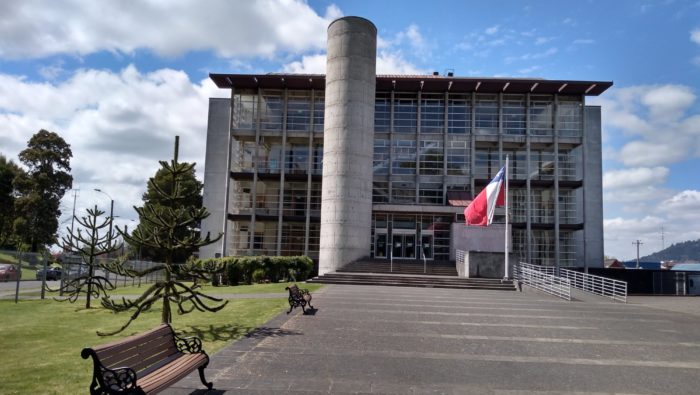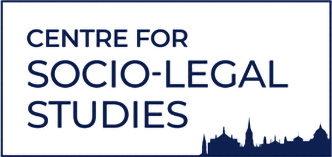
Doing collective courtroom ethnography in times of exceptionality: the Chilean social outburst of 2019

In this blog, I seek to emphasise the way the “plasticity” of the ethnographic approach allows scholars to adapt to adverse situations and how my research team and I reassessed ethnographic work, by acknowledging ethnography’s political value in times of democratic exceptionality.
Between 2018 and 2020, and again in 2024, I have been coordinating and conducting a collective ethnography in Chile’s lower criminal courts, focusing on access to justice through the experiences of users within the judicial system. Our primary research question was: How open and public is the justice system to audiences? Ie the accompanying family members, general citizens, or researchers observing court proceedings. Chile’s judicial system has undergone huge reforms between 2000 and 2008. With the purpose of modernizing justice, the Criminal Procedure Reform introduced new courts in criminal justice These are characterised by an adversarial system following an oral procedure taking place in public hearings, unlike the former system – one of the most inquisitorial systems globally – which was based on a written, mostly secret procedure. Subsequent procedural reforms in family and labour law also included the principle of publicity as a key pillar. Yet, in practice, this principle of publicity remained inconsistently applied.
Our methodology, inspired by the collective ethnographic work of Collectif Onze, involved pairs or trios observing court hearings, each one focusing on specific aspects, such as verbal or non-verbal interactions, and we collaboratively compiled our field notes. Nevertheless, we aimed to highlight the experience of people with no knowledge regarding the law and strange to the judicial context, as well as the treatment they receive in court.
In the beginning, we felt great frustration because of the poor acoustic conditions in most of the courtrooms we visited. Drawing inspiration from acoustic ethnography, which considers the sound environment as an ethnographic field, we started considering sound as an element in itself of the interactions we observed. Sound became a critical element of our observations, as it both facilitated and hindered the judicial process. For example, external noises often disrupted courtrooms, while the soundproofing of glass walls separating the public from the proceedings limited intelligibility. By analyzing these acoustic dimensions, we aimed to understand how sound shapes courtroom interactions.
This research took an unexpected turn during the Chilean social outburst of October 2019, a period marked by massive protests, state violence, and over 20,000 arrests. The collective approach allowed us to process a greater volume of information while mitigating the emotional toll of prolonged exposure to intense settings, such as courtrooms during periods of heightened tension.
In October and November 2019, particularly, Chilean lower courts became focal points of public attention as they oversaw the legality of police arrests. Accessing these courtrooms became more challenging as restrictions tightened, and the tense atmosphere often filled us with fear and sadness. We observed 72 detention control hearings across nine courts in Santiago de Chile and the southern region of Araucanía. This experience highlighted the emotional and political dimensions of our research, as we directly witnessed the repercussions of state repression.
The extraordinary circumstances of 2019 pushed us to reevaluate the role of ethnography in public discourse. As tensions mounted in the courtroom and evidence of rights violations accumulated, we felt compelled to step beyond the traditional boundaries of academic neutrality. We embraced what Didier Fassin calls a strategy of “popularization,” using our observations to contribute to the broader public debate. We published an opinion piece highlighting irregularities in detention hearings, hoping to restore some measure of transparency and public scrutiny to the judicial process.
Collective ethnography proved invaluable in navigating these challenges. It allowed us to observe and document complex interactions efficiently, particularly during high-pressure moments. By sharing field notes and perspectives, we ensured a robust analysis that accounted for the diverse dynamics at play in the courtroom. Moreover, this methodology helped us cope with the emotional burden of the fieldwork, as we supported one another through shared reflections.
Reflecting on this period, I recognized the importance of ethnography as a politically engaged practice. The Chilean social outburst underscored the fragility of democratic norms and the critical role researchers play in documenting and analyzing these moments. By adapting our methods to the realities of the field, we contributed not only to the academic understanding of justice but also to its public accountability. Ethnography’s inherent flexibility allows researchers to adapt to unforeseen circumstances, and its collective dimension fosters collaboration and resilience. More importantly, this approach reinforces the political value of ethnography, reminding us that our work can and should engage with the broader societal struggles we observe.

